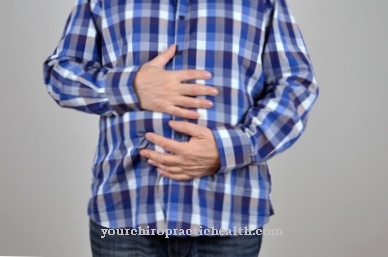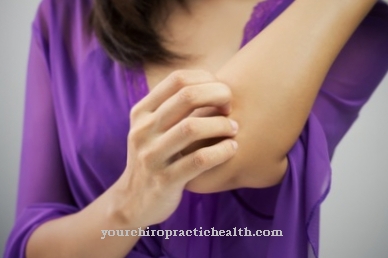Toe pain are a common symptom of illnesses and injuries to the foot or the toes themselves. Depending on the cause, various measures can help against the symptoms. The patient can take some steps to avoid toe pain.
What is toe pain?

Toe pain is caused by injuries or illnesses that affect one or more toes or that have a direct or indirect effect on them. Possible causes are, for example, bruises, fractures and sprains, but also diseases such as gout.
Harmless causes such as an ingrown toenail are also possible. Treatment and diagnosis are based on the cause. Toe pain can also be prevented. The patient must always discuss with a specialist which measures are to be taken.
Various risk groups such as people with congenital malformations of the toes, patients with arthritis, rheumatism or gout as well as extreme athletes who expose their feet and toes to great stress are particularly at risk.
However, toe pain is basically a harmless symptom. With early diagnosis and comprehensive treatment, the pain will in most cases subside or at least be effectively relieved.
causes
Toe pain is often caused by a harmless cause such as shoes that are too tight or poorly cut. An ingrown toenail, osteoarthritis or gout are also possible triggers. In addition, toe pain occurs after accidents, for example with a bent foot, a bruise or a bruise in the area of the toes.
Warts can also be the cause. Pain occurs when the bumps in the skin at the junctions between the toes and balls of the feet appear or become inflamed. Seemingly baseless pain, which occurs mainly in the big toe, suggests gout as a trigger. Accompanying symptoms such as joint swelling and pain in other limbs underline the suspicion.
Persistent pain, especially noticeable early in the morning, suggests arthritis. Toe pain can also occur as a result of circulatory disorders. The cause can be organic diseases such as diabetes or an underactive thyroid. Possible physical causes of circulatory disorders are injuries or bruises in the area of the toes and feet.
Toe pain can also be caused by a number of other causes. Since the complaints are a relatively general symptom, other symptoms often need to be consulted to find the cause.
Diseases with this symptom
- Bruises
- Broken bones
- sprain
- gout
- Ingrown toenail
- rheumatism
- arthrosis
- Bruises
- Foot warts
- Circulatory disorders
- Chilblains
- Corns
- splayfoot
- Athlete's foot
- Diabetic foot syndrome
- arthritis
Complications
Toe pain can cause a variety of complications, depending on its cause. If the symptom is related to an injury to the toes, it will need medical attention. Otherwise it can lead to inflammation or circulatory disorders.
If a broken toe is not treated, there is a risk that the bone will grow together incorrectly. This can lead to permanent malpositions. A badly healed bruise can cause permanent damage to tissue, nerves and blood vessels. Chronic toe pain can also impair mental well-being. The quality of life drops rapidly when walking and standing become a burden.
Those affected also risk bad posture and malpositions, which can lead to further complications such as joint wear or nerve damage. Untreated gout can lead to joint damage, kidney stones, and a few other complications. If too much uric acid gets into the kidneys, it can cause kidney failure.
Then a so-called chronic gout kidney develops, which is associated with other health problems. In order to avoid any complications, a doctor should be consulted with the complaints.
When should you go to the doctor?
Pain in the toe area often goes away on its own. A doctor should be consulted if symptoms have not subsided or have even worsened after a few days. If the cause is known, a decision about a doctor's visit must be made depending on this. Patients at risk, such as people with osteoporosis or arthritis, should inform their doctor about the pain.
If you are taking medication or have an illness, toe pain should be clarified by a doctor. The doctor can clarify any side effects and determine the cause of the toe pain. If the painful tea does not heal within a few days, a doctor is recommended. Medical help is particularly necessary if the pain persists and makes walking more difficult.
Otherwise it can lead to incorrect loads and other consequential symptoms. Toe pain associated with inflammation or an open wound is best resolved immediately. The same applies if a fever occurs, pus is noticed, or the pain gets worse quickly.
Medical treatment is required for bruises, sprains and fractures. The contact person is the family doctor or a podiatrist. The orthopedist can help with orthopedic toe pain.
Doctors & therapists in your area
diagnosis
A specialist should be consulted if toe pain persists or is intense. In order to narrow down possible causes, the doctor will first ask about the symptoms and the patient's medical history. This is followed by a clinical examination. The doctor will palpate the painful area and take an x-ray if necessary. The X-ray is taken at an angle from the side and from above.
The images can be used to check for a broken toe, sprain, toe dislocation, and gout as possible causes. Often swelling, pressure pain, bruises or misalignments are noticed through the touch, which enable a diagnosis. Toe pain, the cause of which is known, usually only requires a routine physical examination. The doctor can usually make the diagnosis based on the physical examination.
If the cause of the symptoms is unknown, a blood test or even a biopsy can be considered. The doctor may have your CT done to check for any internal injuries. A specialist, such as a podiatrist or an orthopedic surgeon, is usually called in to make the diagnosis.
Treatment & Therapy
For toe pain, treatment depends on the cause. If the shoes are too tight, the shoes must be changed. If the cause of the symptoms is unknown, the doctor must first be consulted. It may be due to a disease that needs to be treated first. An ingrown toenail needs to be removed.
The affected area should then be disinfected and spared for a few days. Treatment for gout must be started as early as possible. The patient must take drugs that regulate uric acid levels and maintain a balanced diet. Suitable agents are anti-inflammatory drugs such as diclofenac or indomethacin.
Toe pain after a sprain or fracture will subside once the injury has healed. Painkillers, cooling and rest help. Inflammation or infection that causes toe pain can also be treated with medication. It is also important to determine the trigger and fix it. If these measures are initiated early, the prospect of a cure is good.
A tumor is usually treated surgically. After such an operation, the patient must also do physiotherapy and take other measures to ensure the health of the toes. This also includes regular follow-up checks by the doctor. Recovery is possible if these measures are followed consistently.
Outlook & forecast
Toe pain is usually temporary. If the patient spares himself enough and corrects the causes, the pain should subside after a few days. The quality of life is not severely limited by toe pain. However, the prognosis also depends on the cause.
In the event of a fracture or sprain, the pain usually lasts for a few days. The doctor will prescribe suitable pain medication, which usually relieves the intense pain sufficiently. If the disease progresses positively, the pain also disappears quickly.
If the prescribed medication does not work as expected, alternative remedies from naturopathy are available. In addition, the prospects of recovery can be improved through physiotherapy, acupuncture, massages and measures from Chinese medicine.
The prognosis for gout is good, provided that treatment is followed consistently and the patient maintains a healthy and conscious lifestyle. If the cause is severe, such as a tumor or chronic arthritis, the prognosis is less positive. In the event of a tumor, there is a risk that the toe and other parts of the foot will have to be amputated. This can lead to persistent difficulty walking. In the long term, the condition can also have negative effects on mental health.
In arthritis or rheumatism, the disease can be expected to progress. Toe pain can be treated symptomatically. A causal therapy is not possible or only to a limited extent. The prognosis is accordingly less positive. Thanks to comprehensive medical care, patients can still lead a relatively symptom-free life.
prevention
Toe pain can be prevented by wearing proper footwear that supports the natural gait. A clean walk and proper warm-up before exercise also help. Suitable work shoes must be worn for activities that can lead to toe injuries.
However, if a bruise or an twist should occur, immediate cooling and protection will help. If the toe pain is caused by a chronic illness, pain medication and, if necessary, anti-inflammatory drugs and other preparations should be taken as a preventive measure. Gout attacks can be prevented by adjusting your eating habits.
Overweight people should reduce their body weight and generally exercise a lot. The patient should also regularly consult the specialist who can monitor the course of the disease and thus prevent complications. The doctor can also name other preventive measures.
You can do that yourself
If toe pain persists, which can be traced back to a chronic disease such as gout or arthritis, the feet must be sufficiently protected. The patient should adhere to the medical guidelines regarding medication and rest and avoid additional stress on the toes.
If the symptoms are due to gout, the medical guidelines regarding diet and rest must be followed. The same applies to arthritis or osteoporosis. Under certain circumstances, homeopathic preparations can be considered as an accompanying measure. Consultation with your family doctor should be made about this.
A cold foot bath can help if the pain is severe. Warm pads also have a pain-relieving effect and help, for example, with inflammation or blood circulation disorders. Regular care of your feet is just as important. The toenails in particular are best trimmed regularly to prevent ingrown nails from forming. Regular care can also prevent inflammation and counteract circulatory disorders.
Various care products support the care of toes and toenails. Which measures make sense in detail should always be discussed with the responsible doctor. The physician will work with the patient to develop a number of measures that can be used to support the therapy. If necessary, he will call in other doctors, nutritionists or therapists if the condition is caused by a mental or psychosomatic illness.
























.jpg)



